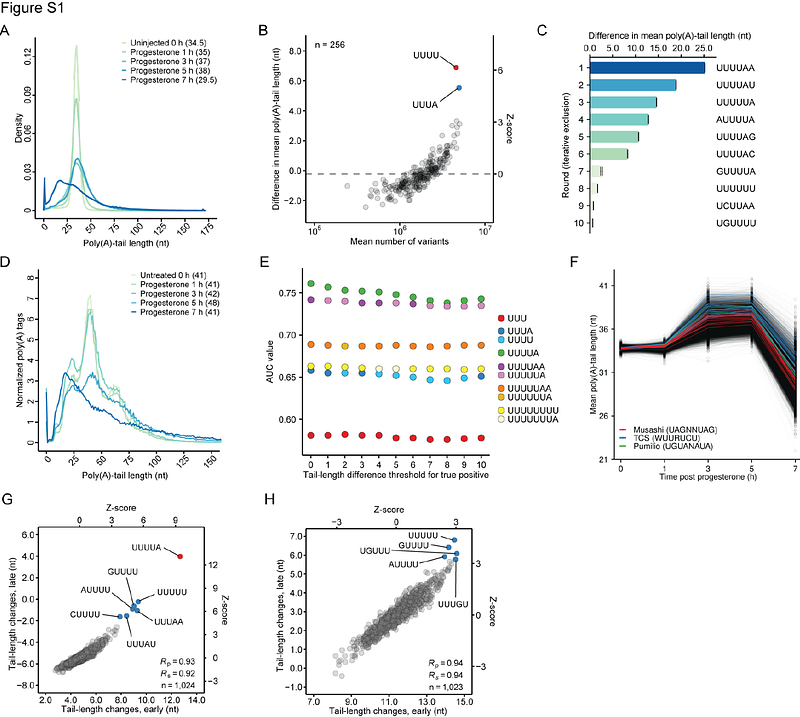Control of poly(A)-tail length and translation in vertebrate oocytes and early embryos

Control of poly(A)-tail length and translation in vertebrate oocytes and early embryos
Xiang, K.; Ly, J.; Bartel, D.
AbstractDuring oocyte maturation and early embryogenesis, changes in mRNA poly(A)-tail lengths strongly influence translation, but how these tail-length changes are orchestrated has been unclear. Here, we performed tail-length and translational profiling of mRNA reporter libraries (each with millions of 3'-UTR sequence variants) in frog oocytes and embryos, and fish embryos. We found that the UUUUA element, together with the polyadenylation signal (AAUAAA or AUUAAA), specifies cytoplasmic polyadenylation, and identified contextual features that modulate the activity of both elements. In maturing oocytes, this tail lengthening occurs against a backdrop of global deadenylation and the action of C-rich elements that specify tail-length-independent translational repression. In embryos, cytoplasmic polyadenylation becomes more permissive, and additional elements specify waves of stage-specific deadenylation. Together, these findings largely explain the complex tapestry of tail-length changes observed in early frog and fish development, with strong evidence of conservation in both mice and humans.